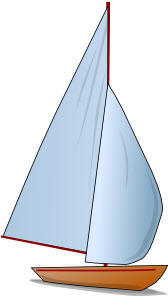Israel to Display the Dead Sea Scrolls on the Internet
By ETHAN BRONNER
Published: August 26, 2008
JERUSALEM — In a crowded laboratory painted in gray and cooled like a cave, half a dozen specialists embarked this week on a historic undertaking: digitally photographing every one of the thousands of fragments of the Dead Sea Scrolls with the aim of making the entire file — among the most sought-after and examined documents on earth — available to all on the Internet.
Rina Castelnuovo for The New York Times
Simon Tanner is leading a team at Israel's museum who are digitalizing the Dead sea scrolls.
Equipped with high-powered cameras with resolution and clarity many times greater than those of conventional models, and with lights that emit neither heat nor ultraviolet rays, the scientists and technicians are uncovering previously illegible sections and letters of the scrolls, discoveries that could have significant scholarly impact.
The 2,000-year-old scrolls, found in the late 1940s in caves near the Dead Sea east of Jerusalem, contain the earliest known copies of every book of the Hebrew Bible (missing only the Book of Esther), as well as apocryphal texts and descriptions of rituals of a Jewish sect at the time of Jesus. The texts, most of them on parchment but some on papyrus, date from the third century B.C. to the first century A.D.
Only a handful of the scrolls exist in large pieces, with several on permanent exhibit at the Israel Museum here in its dimly lighted Shrine of the Book. Most of what was found is separated into 15,000 fragments that make up about 900 documents, fueling a longstanding debate on how to order the fragments as well as the origin and meaning of what is written on them.
The scrolls’ contemporary history has been something of a tortured one because they are among the most important sources of information on Jewish and early Christian life. After their initial discovery they were tightly held by a small circle of scholars. In the last 20 years access has improved significantly, and in 2001 they were published in their entirety. But debate over them seems only to grow.
Scholars continually ask the Israel Antiquities Authority, the custodian of the scrolls, for access to them, and museums around the world seek to display them. Next month, the Jewish Museum of New York will begin an exhibition of six of the scrolls.
The keepers of the scrolls, people like Pnina Shor, head of the conservation department of the antiquities authority, are delighted by the intense interest but say that each time a scroll is exposed to light, humidity and heat, it deteriorates. She says even without such exposure there is deterioration because of the ink used on some of the scrolls as well as the residue from the Scotch tape used by the 1950s scholars in piecing together fragments.
The entire collection was photographed only once before — in the 1950s using infrared — and those photographs are stored in a climate-controlled room because they show things already lost from some of the scrolls. The old infrared pictures will also be scanned in the new digital effort.
“The project began as a conservation necessity,” Ms. Shor explained. “We wanted to monitor the deterioration of the scrolls and realized we needed to take precise photographs to watch the process. That’s when we decided to do a comprehensive set of photos, both in color and infrared, to monitor selectively what is happening. We realized then that we could make the entire set of pictures available online to everyone, meaning that anyone will be able to see the scrolls in the kind of detail that no one has until now.”
The process will probably take one to two years — more before it is available online — and is being led by Greg Bearman, who retired from the NASA Jet Propulsion Laboratory. Data collection is directed by Simon Tanner of Kings College London.
Jonathan Ben-Dov, a professor of biblical studies at the University of Haifa, is taking part in the digitalization project. Watching the technicians gingerly move a fragment into place for a photograph, he said that it had long been very difficult for senior scholars to get access.
Once this project is completed, he said with wonder, “every undergraduate will be able to have a detailed look at them from numerous angles.”
http://www.nytimes.com/2008/08/27/world/middleeast/27scrolls.html?_r=1&oref=slogin
By ETHAN BRONNER
Published: August 26, 2008
JERUSALEM — In a crowded laboratory painted in gray and cooled like a cave, half a dozen specialists embarked this week on a historic undertaking: digitally photographing every one of the thousands of fragments of the Dead Sea Scrolls with the aim of making the entire file — among the most sought-after and examined documents on earth — available to all on the Internet.
Rina Castelnuovo for The New York Times
Simon Tanner is leading a team at Israel's museum who are digitalizing the Dead sea scrolls.
Equipped with high-powered cameras with resolution and clarity many times greater than those of conventional models, and with lights that emit neither heat nor ultraviolet rays, the scientists and technicians are uncovering previously illegible sections and letters of the scrolls, discoveries that could have significant scholarly impact.
The 2,000-year-old scrolls, found in the late 1940s in caves near the Dead Sea east of Jerusalem, contain the earliest known copies of every book of the Hebrew Bible (missing only the Book of Esther), as well as apocryphal texts and descriptions of rituals of a Jewish sect at the time of Jesus. The texts, most of them on parchment but some on papyrus, date from the third century B.C. to the first century A.D.
Only a handful of the scrolls exist in large pieces, with several on permanent exhibit at the Israel Museum here in its dimly lighted Shrine of the Book. Most of what was found is separated into 15,000 fragments that make up about 900 documents, fueling a longstanding debate on how to order the fragments as well as the origin and meaning of what is written on them.
The scrolls’ contemporary history has been something of a tortured one because they are among the most important sources of information on Jewish and early Christian life. After their initial discovery they were tightly held by a small circle of scholars. In the last 20 years access has improved significantly, and in 2001 they were published in their entirety. But debate over them seems only to grow.
Scholars continually ask the Israel Antiquities Authority, the custodian of the scrolls, for access to them, and museums around the world seek to display them. Next month, the Jewish Museum of New York will begin an exhibition of six of the scrolls.
The keepers of the scrolls, people like Pnina Shor, head of the conservation department of the antiquities authority, are delighted by the intense interest but say that each time a scroll is exposed to light, humidity and heat, it deteriorates. She says even without such exposure there is deterioration because of the ink used on some of the scrolls as well as the residue from the Scotch tape used by the 1950s scholars in piecing together fragments.
The entire collection was photographed only once before — in the 1950s using infrared — and those photographs are stored in a climate-controlled room because they show things already lost from some of the scrolls. The old infrared pictures will also be scanned in the new digital effort.
“The project began as a conservation necessity,” Ms. Shor explained. “We wanted to monitor the deterioration of the scrolls and realized we needed to take precise photographs to watch the process. That’s when we decided to do a comprehensive set of photos, both in color and infrared, to monitor selectively what is happening. We realized then that we could make the entire set of pictures available online to everyone, meaning that anyone will be able to see the scrolls in the kind of detail that no one has until now.”
The process will probably take one to two years — more before it is available online — and is being led by Greg Bearman, who retired from the NASA Jet Propulsion Laboratory. Data collection is directed by Simon Tanner of Kings College London.
Jonathan Ben-Dov, a professor of biblical studies at the University of Haifa, is taking part in the digitalization project. Watching the technicians gingerly move a fragment into place for a photograph, he said that it had long been very difficult for senior scholars to get access.
Once this project is completed, he said with wonder, “every undergraduate will be able to have a detailed look at them from numerous angles.”
http://www.nytimes.com/2008/08/27/world/middleeast/27scrolls.html?_r=1&oref=slogin














